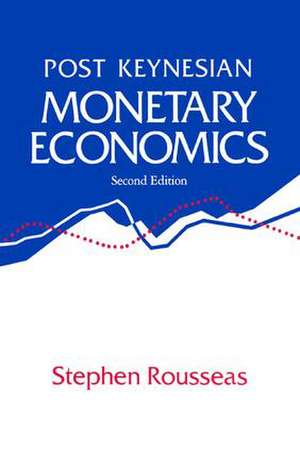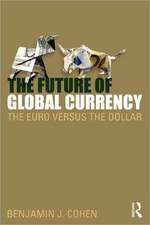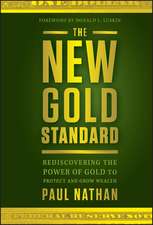Post Keynesian Monetary Economics
Autor Rousseasen Limba Engleză Paperback – 31 iul 1992
| Toate formatele și edițiile | Preț | Express |
|---|---|---|
| Paperback (1) | 378.83 lei 6-8 săpt. | |
| Taylor & Francis – 31 iul 1992 | 378.83 lei 6-8 săpt. | |
| Hardback (1) | 997.14 lei 6-8 săpt. | |
| Taylor & Francis – 31 iul 1992 | 997.14 lei 6-8 săpt. |
Preț: 378.83 lei
Nou
Puncte Express: 568
Preț estimativ în valută:
72.49€ • 75.89$ • 59.98£
72.49€ • 75.89$ • 59.98£
Carte tipărită la comandă
Livrare economică 05-19 aprilie
Preluare comenzi: 021 569.72.76
Specificații
ISBN-13: 9781563240959
ISBN-10: 1563240955
Pagini: 136
Dimensiuni: 152 x 229 x 8 mm
Greutate: 0.2 kg
Ediția:Revised
Editura: Taylor & Francis
Colecția Routledge
Locul publicării:Oxford, United Kingdom
ISBN-10: 1563240955
Pagini: 136
Dimensiuni: 152 x 229 x 8 mm
Greutate: 0.2 kg
Ediția:Revised
Editura: Taylor & Francis
Colecția Routledge
Locul publicării:Oxford, United Kingdom
Cuprins
part Post Keynesian Monetary Economics Second Edition; Chapter 1 Introduction; Chapter 2 The peculiarity of money; Chapter 3 The demand for money and the rate of interest; Chapter 4 The endogenous money supply; Chapter 5 The Weintraub'“Kaldor models of endogeneity; Chapter 6 The policy implications of Post Keynesian monetary theory;
Descriere
Rousseas holds a Post-Keynesian view of an elastic and endogenous money supply. His main theme stresses the role of innovation in the financial sector of the US economy and its implications for control of the money supply and credit, as well as the larger issue of macroeconomic policy.













